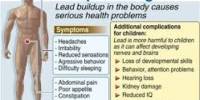The increased frequency of accidents caused by riding electric scooters, according to a Henry Ford Health System physician, is a major public health concern. Any trauma to the scalp, skull, or brain is considered a head injury.
A knock on the head to catastrophic brain damage are all possible injuries. Severe head and face hemorrhages are common in serious head injury victims, who may also be disoriented, exhausted, or comatose. Others may develop amnesia (short-term memory loss), headaches, vomiting, or seizures.
Any damage to the soft tissue, bone, spinal column, or nerves in the neck is considered a neck injury. A crick in the neck, a muscular strain, a neck sprain, whiplash, a herniated disc, a neck fracture (break in a cervical bone), a cervical dislocation, stingers and burners (temporary nerve root or brachial plexus injuries), and a spinal cord injury are the most common neck injuries.
Kathleen Yaremchuk, M.D., chair of the Department of Otolaryngology-Head and Neck Surgery, said in a study on e-scooter injuries that a review of emergency visits in the last three years showed e-scooter injuries have grown significantly, with many of them being related to head and neck injuries.
The research looks at how injuries such as concussions, fractures, contusions and abrasions, lacerations, and internal organ damage have altered since the public launch of e-scooter rideshare systems in September 2017.
According to the study’s breakdown of injury types, head and neck injuries accounted for roughly 28% of all injuries. The results were further broken down by age categories, revealing that patients aged 17 and under were the most harmed between 2009 and 2017.
After 2017, the 18-to-44-year-old age group became the most injured, indicating that e-scooter injuries are more common among older riders.
“I’ve seen riders not wearing helmets, two or three riders on one e-scooter recklessly weaving in and out of traffic. The numbers of injuries we’re seeing should be a wake-up call about the safety risks of riding these modes of transportation,” says Dr. Yaremchuk, the study’s senior author.
We hope the study will help educate users of rideshare e-scooters about the potential for serious head and neck injuries and the safety precautions they should take.
Dr. Yaremchuk
The findings of Henry Ford’s retrospective study were presented at the American Academy of Otolaryngology’s annual meeting.
Since the introduction of rideshare e-scooters, motorized vehicles that can reach speeds of up to 35 miles per hour, the Henry Ford research team discovered that injuries have increased as more people gravitate to the inexpensive and convenient mode of transportation used primarily in congested urban areas.
“We hope the study will help educate users of rideshare e-scooters about the potential for serious head and neck injuries and the safety precautions they should take,” says Dr. Yaremchuk.
In urban areas and on college campuses, rideshare programs have become one of the most popular modes of transportation. Micromobility refers to a spectrum of small, lightweight vehicles such as bicycles, Ebikes, electric scooters and skateboards, shared bicycles, and electric pedal-assisted bicycles, and has been dubbed the future of urban transportation.
According to the Henry Ford study, there were more than 100,000 projected e-scooter injuries reported from January 2009 to December 2019 based on data acquired and evaluated from the United States Consumer Product Safety Commission.
The number of injuries per year stayed pretty steady from 2009 to 2017. However, since the introduction of e-scooter rideshare programs in 2017, the number of total injuries has climbed by 3.5 times. During that time, head and neck injuries climbed by 4.5 times.
The most common type of head and neck injuries included:
- Internal organs, including brain injuries (32.5%)
- Lacerations (24.9%)
- Contusions and abrasions (15.6%)
- Concussions (11.1%), and
- Fractures (7.8%).
25,562 (almost 28%) of the 92,353 patients treated in emergency rooms experienced head and neck injuries, while slightly more than 10% (9,994) required hospitalization. E-scooter-related deaths accounted for barely over 0.1 percent (105) of all deaths, with none of them attributed to head and neck injuries.
“As a physician, I would recommend that people who use this mode of transportation wear a helmet and apply the same approach as when driving a car,” says Samantha Tam, M.D., study co-author and a specialist with the Department of Otolaryngology-Head and Neck Surgery at Henry Ford Health System.
If you’re going to ride an electric scooter for the first time, there are a few things to keep in mind, according to safety experts:
- Bring your own safety gear including a helmet, knee and elbow pads
- Wear appropriate clothing that won’t constrict your body while riding
- Understand the characteristics, features, and capabilities of the individual e-scooter you’ll be riding.
- Follow traffic regulations, keep your eyes on the road ahead, and keep an eye out for pedestrians, vehicles, and other potential hazards.
E-scooter accidents have been linked to autos and ground barriers such as curbs, poles, and manhole covers, according to a safety study. Mechanical issues, such as failed brakes and wheels, have sometimes contributed to accidents. Rider distraction was also a factor.
















